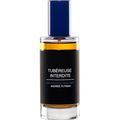05/22/2025

ClaireV
969 Reviews

ClaireV
1
Not a variant of the perfume - the OG oil!
Oud Yusuf is perhaps the most immediately likeable of all of the pure oud oils I have ever smelled. Ensar himself calls it ‘the prettiest oud you can wear’ and that’s fair. Although it is thoroughly identifiable as oud oil, and not, say, a floral absolute or essential oil, it contains such an astonishing array of fruit and flower notes that one might be forgiven for thinking it is a blend, rather than a pure oud oil. That means that, although it is an easy oud for a beginner to enjoy, it offers a depth and complexity that will keep even experienced oudies intrigued over the course of the day.
Oud Yusuf is a testament to the skill of the composer who can gently and delicately coax out the various facets he wants from the wood via minor adjustments here and there to wood he puts in the still, to the distilling times, to the purity of the water he uses for the distillation, to the very material the still is made out of, and so on. Otherwise, who might suspect that out of a block of wood could come such a range of fruit and flower notes? Although Oud Yusuf is a Borneo-style oud with Cambodi characteristics, it does not have any of the sweet, sticky berries of the Cambodi profile. Instead, it is a cornucopia of ripe stone fruit, specifically pears, peaches, and apricots. These lush fruit aromas, packed into the opening phases of the oil in particular, have that thick, almost fermented quality of the thick fruit juices enjoyed in summer all over the former Yugoslavia and Russia. These juices are so grainy that you imagine they put all of the fruit in there, including the core and skin, and so thick that you could stand a spoon up in them. These notes are what clearly come across in Oud Yusuf, overlaid with a slight tinge of camphor or wintergreen, even mint.
Three or four hours in, the oil develops a smoky, woody quality that one associates with the smell of oud, shedding most if not all of the stone fruits and mint notes from the first phase. It is more traditionally oudy at this stage, but not at all animalic or sour. It boasts the refined darkness of soft black licorice or leather. Positioned halfway between dry woods and balmy supple leather, the latter half of this oil reminds me quite a bit of the drydown of Vikt by Slumberhouse or the amazing Blackbird by House of Matriarch, both Western fragrances that contain a small amount of real oud oil. They are not smell-alikes, of course, but there is a similar consistency to the aroma of the oud at this stage – dark, balmy, leathery, but not desiccated.
Finally, a flourish of delicate floral notes appears just as you believe the oud is in its demise. Although I do not clearly smell lilies or lilacs like many do with this oil (including Ensar himself), I do smell something like a creamy magnolia or champaca, something with a tinge of crème anglaise to it, a vanillic heft. The florals are not fresh or green, but warm and mature. They bloom directly out of the wood, carrying that slightly sour, smoky woodsy note in the breath of their petals.
Oud Yusuf is a testament to the skill of the composer who can gently and delicately coax out the various facets he wants from the wood via minor adjustments here and there to wood he puts in the still, to the distilling times, to the purity of the water he uses for the distillation, to the very material the still is made out of, and so on. Otherwise, who might suspect that out of a block of wood could come such a range of fruit and flower notes? Although Oud Yusuf is a Borneo-style oud with Cambodi characteristics, it does not have any of the sweet, sticky berries of the Cambodi profile. Instead, it is a cornucopia of ripe stone fruit, specifically pears, peaches, and apricots. These lush fruit aromas, packed into the opening phases of the oil in particular, have that thick, almost fermented quality of the thick fruit juices enjoyed in summer all over the former Yugoslavia and Russia. These juices are so grainy that you imagine they put all of the fruit in there, including the core and skin, and so thick that you could stand a spoon up in them. These notes are what clearly come across in Oud Yusuf, overlaid with a slight tinge of camphor or wintergreen, even mint.
Three or four hours in, the oil develops a smoky, woody quality that one associates with the smell of oud, shedding most if not all of the stone fruits and mint notes from the first phase. It is more traditionally oudy at this stage, but not at all animalic or sour. It boasts the refined darkness of soft black licorice or leather. Positioned halfway between dry woods and balmy supple leather, the latter half of this oil reminds me quite a bit of the drydown of Vikt by Slumberhouse or the amazing Blackbird by House of Matriarch, both Western fragrances that contain a small amount of real oud oil. They are not smell-alikes, of course, but there is a similar consistency to the aroma of the oud at this stage – dark, balmy, leathery, but not desiccated.
Finally, a flourish of delicate floral notes appears just as you believe the oud is in its demise. Although I do not clearly smell lilies or lilacs like many do with this oil (including Ensar himself), I do smell something like a creamy magnolia or champaca, something with a tinge of crème anglaise to it, a vanillic heft. The florals are not fresh or green, but warm and mature. They bloom directly out of the wood, carrying that slightly sour, smoky woodsy note in the breath of their petals.




 Thai oud
Thai oud Piopne
Piopne









